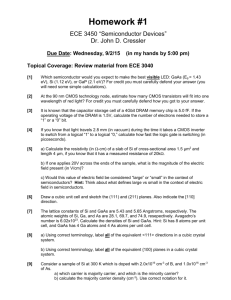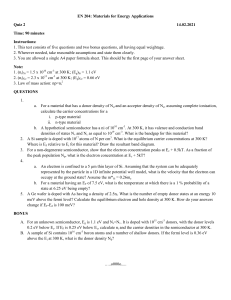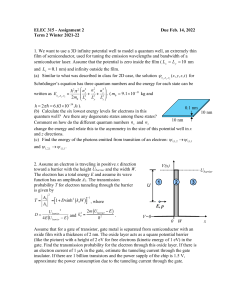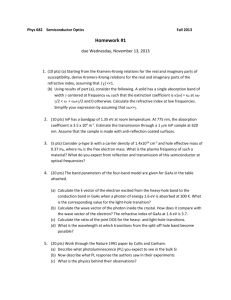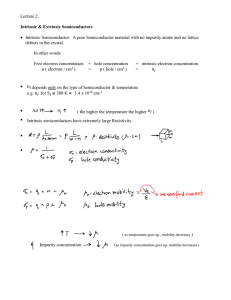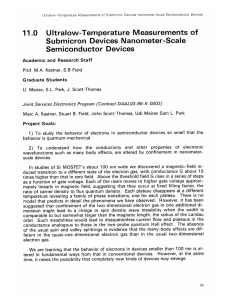For a non-degenerate semiconductor, the peak in the electron
advertisement
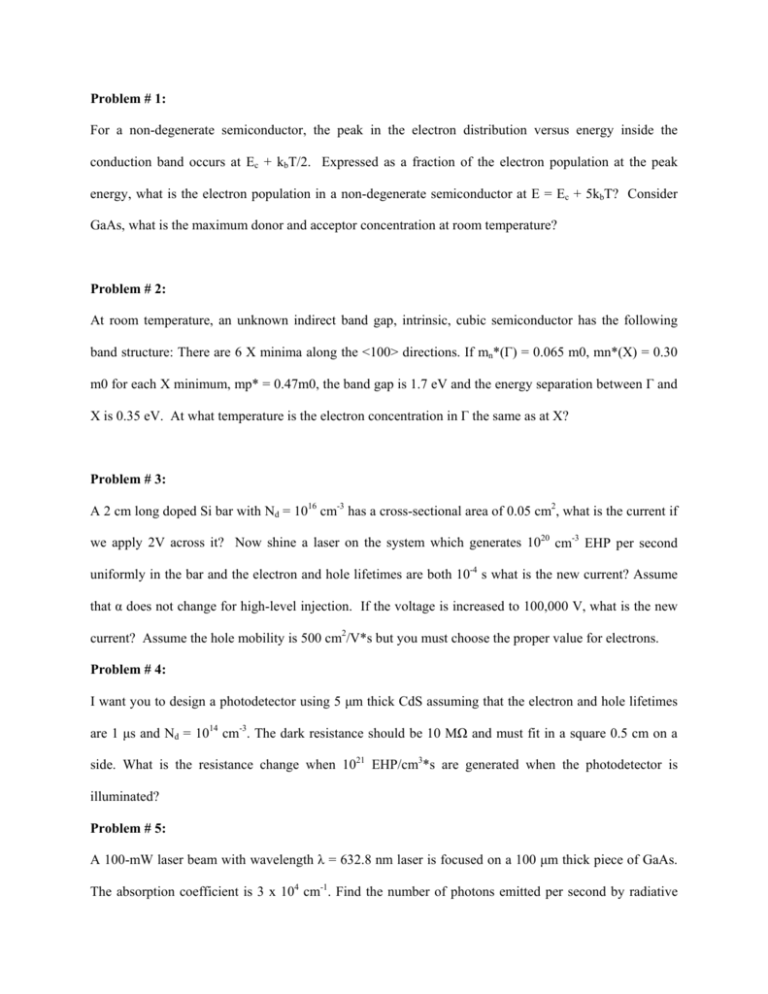
Problem # 1: For a non-degenerate semiconductor, the peak in the electron distribution versus energy inside the conduction band occurs at Ec + kbT/2. Expressed as a fraction of the electron population at the peak energy, what is the electron population in a non-degenerate semiconductor at E = Ec + 5kbT? Consider GaAs, what is the maximum donor and acceptor concentration at room temperature? Problem # 2: At room temperature, an unknown indirect band gap, intrinsic, cubic semiconductor has the following band structure: There are 6 X minima along the <100> directions. If mn*(Γ) = 0.065 m0, mn*(X) = 0.30 m0 for each X minimum, mp* = 0.47m0, the band gap is 1.7 eV and the energy separation between Γ and X is 0.35 eV. At what temperature is the electron concentration in Γ the same as at X? Problem # 3: A 2 cm long doped Si bar with Nd = 1016 cm-3 has a cross-sectional area of 0.05 cm2, what is the current if we apply 2V across it? Now shine a laser on the system which generates 1020 cm-3 EHP per second uniformly in the bar and the electron and hole lifetimes are both 10-4 s what is the new current? Assume that α does not change for high-level injection. If the voltage is increased to 100,000 V, what is the new current? Assume the hole mobility is 500 cm2/V*s but you must choose the proper value for electrons. Problem # 4: I want you to design a photodetector using 5 μm thick CdS assuming that the electron and hole lifetimes are 1 μs and Nd = 1014 cm-3. The dark resistance should be 10 MΩ and must fit in a square 0.5 cm on a side. What is the resistance change when 1021 EHP/cm3*s are generated when the photodetector is illuminated? Problem # 5: A 100-mW laser beam with wavelength λ = 632.8 nm laser is focused on a 100 μm thick piece of GaAs. The absorption coefficient is 3 x 104 cm-1. Find the number of photons emitted per second by radiative recombination in the GaAs assuming perfect efficiency. What is the power delivered to the sample as heat?

